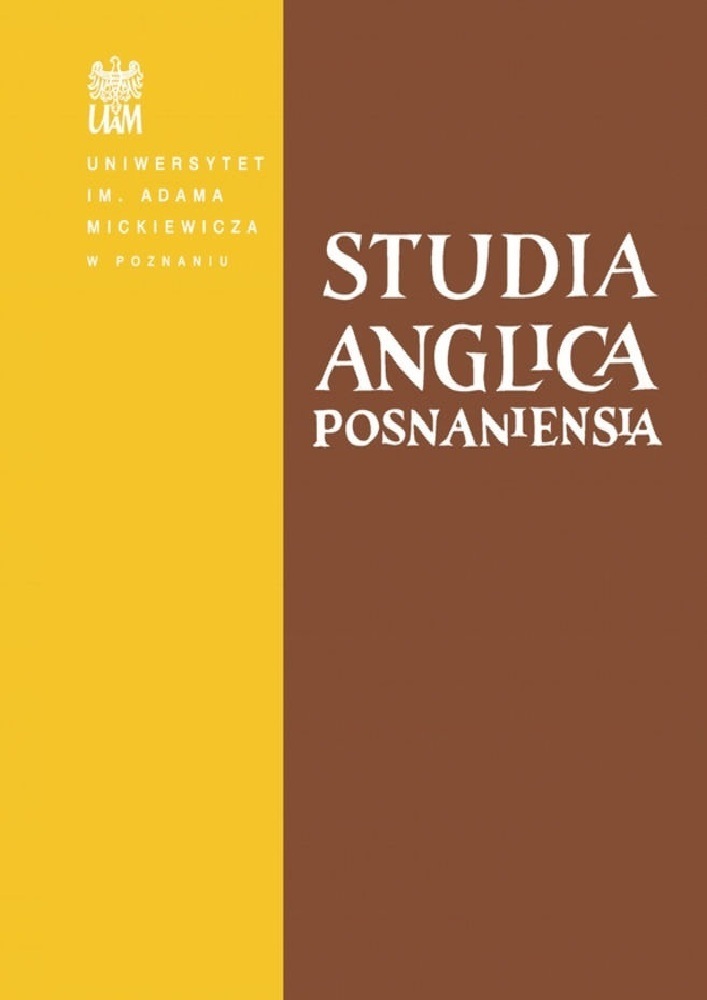Abstract
The study analyzes the Early Old English nominal system from a synchronic perspective, since a diachronic approach is unable to provide an accurate description of the language. The analysis is based on the full text of the Vespasian Psalter interlinear gloss. The nouns were grouped according to their inflectional endings, thus representing the synchronically functioning nominal system of Early Old English, contrary to the traditional, diachronic classification, which uses reconstructed stems to classify nouns. The Vespasian Psalter model is compared and contrasted with the latest ‘classical’ work on Old English, Hogg and Fulk’s A Grammar of Old English. Volume 2: Morphology (2011), which also aims at presenting Old English from a synchronic perspective.
References
Kuhn, Sherman M. (ed.). 1965. The Vespasian Psalter. Ann Arbor: University of Michigan Press.
Aronoff, Mark. [1994] 1996. Morphology by itself: Stems and inflectional classes. (2nd edn.). Massachusetts: Massachusetts Institute of Technology.
Ball, C. J. E. 1970. The language of the Vespasian Psalter gloss: Two caveats. The Review of English Studies, New Series 21, 84. 462-465.
Beard, Robert. 1995. Lexeme-morpheme base morphology: A general theory of inflection and word-formation. Cambridge: SUNY Press.
Bertacca, Antonio. 2009. Natural Morphology and the loss of nominal inflections in English. Pisa: Pisa University Press.
Blevins, James P. 2003. Stems and paradigms. Language 79(4). 737-767.
Blevins, James P. 2006. Word-based morphology. Journal of Linguistics 42. 531-573.
Campbell, Alistair. 1959. Old English grammar. Oxford: Clarendon Press.
Carstairs, Andrew. 1983. Paradigm economy. Journal of Linguistics 19(2). 115-128.
Grimm, Conrad. 1906. Glossar zu dem Vespasian Psalter und den Hymnen. Heidelberg: Carl Winter’s Universitätsbuchhandlung.
Hansen, Erik W. 2001. The synchronic fallacy. Historical investigations with a theory of history. Odense: Odense University Press.
Hogg, Richard M. 1997. Some remarks on case marking in Old English. Transactions of the Philological Society 95. 95-109.
Hogg, Richard M. 2005 [1992]. The Cambridge history of the English language. Vol. 1: The beginnings to 1066. Cambridge: Cambridge University Press.
Hogg, Richard M. & R.D. Fulk. 2011. A grammar of Old English. Volume 2: Morphology. London: Wiley-Blackwell.
Koch, C. Friedrich. 1863. Laut- und Flexionslehre der englischen Sprache. Hermann Bohlau: Weimar.
Krygier, Marcin. 2002. A reclassification of Old English nouns. Studia Anglica Posnaniensia 38. 311-319.
Lapidge, Michael (ed.). [1999] 2001. The Blackwell encyclopedia of Anglo-Saxon England. Massachusetts: Blackwell Publishers Ltd.
Levin, Samuel R. 1969. A reclassification of the Old English strong verbs. In Roger Lass (ed.), 1969. Approaches to English historical linguistics. 249-257. New York: Holt, Rinehart and Winston.
Mertens-Fonck, Paule. 1985. The place of the Vespasian Psalter in the history of English. Studia Anglica Posnaniensia 17. 17-28.
Peinovich, Michael P. 1979. Old English noun morphology. A diachronic study. North Holland Publishing Company: Amsterdam.
Reszkiewicz, Alfred. 1996 [1973]. A diachronic grammar of Old English. Warszawa: Wydawnictwo Naukowe PWN.
Stewart, Thomas W. Jr. 2008. A consumer’s guide to contemporary morphological theories. Working Papers in Linguistics 58. 138-230.
Stump, Gregory T. 2011. Inflectional morphology: A theory of paradigm-structure. Cambridge: Cambridge University Press.
Zwicky, Arnold M. 1985. How to describe inflection. In M. Niepokuj, M. Van Clay, V. Nikiforidou & D. Feder (eds.). Proceedings of the Eleventh Annual Meeting of the Berkeley Linguistic Society. 372-386, Berkeley: Berkeley Linguistics Society.
